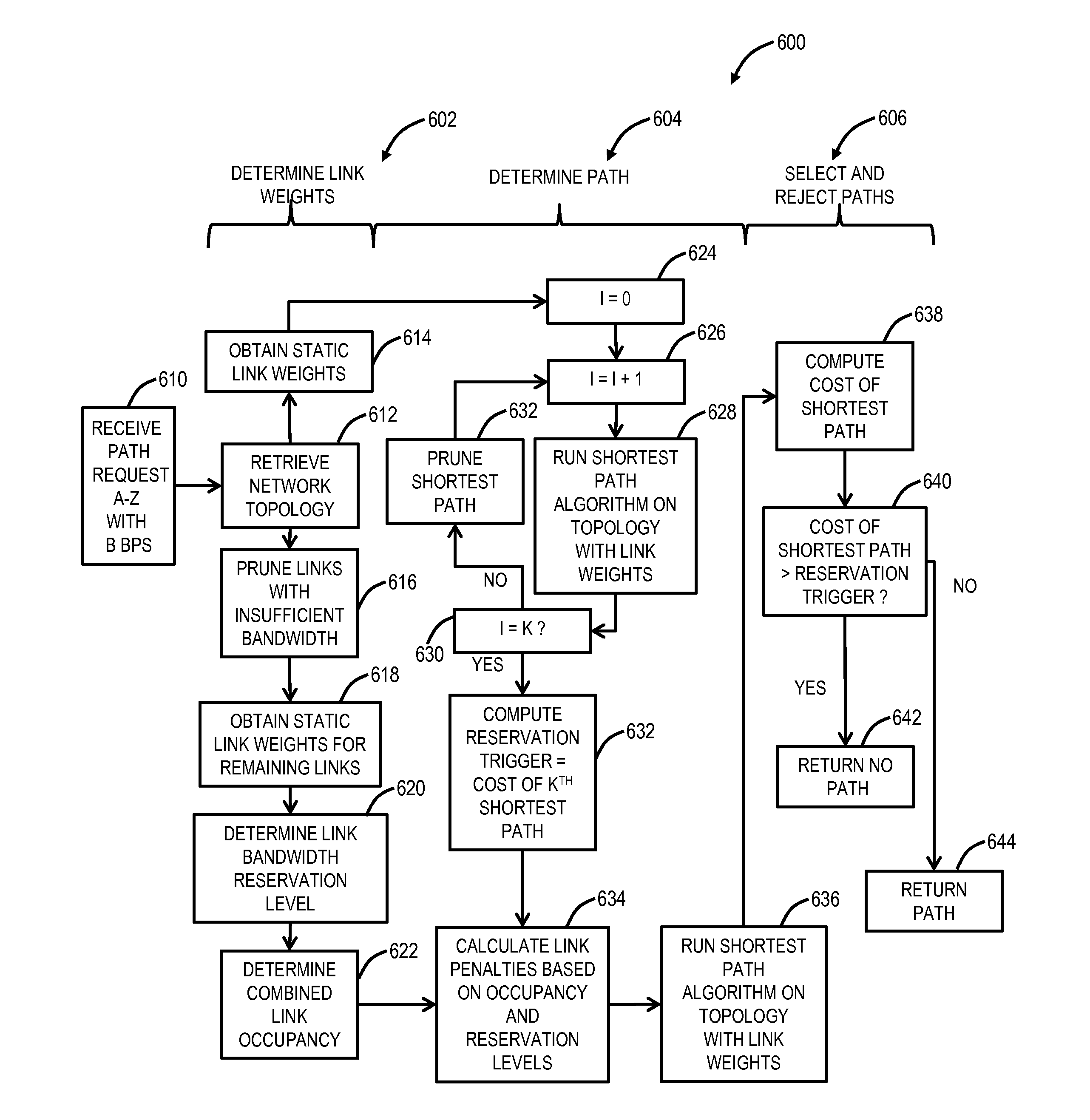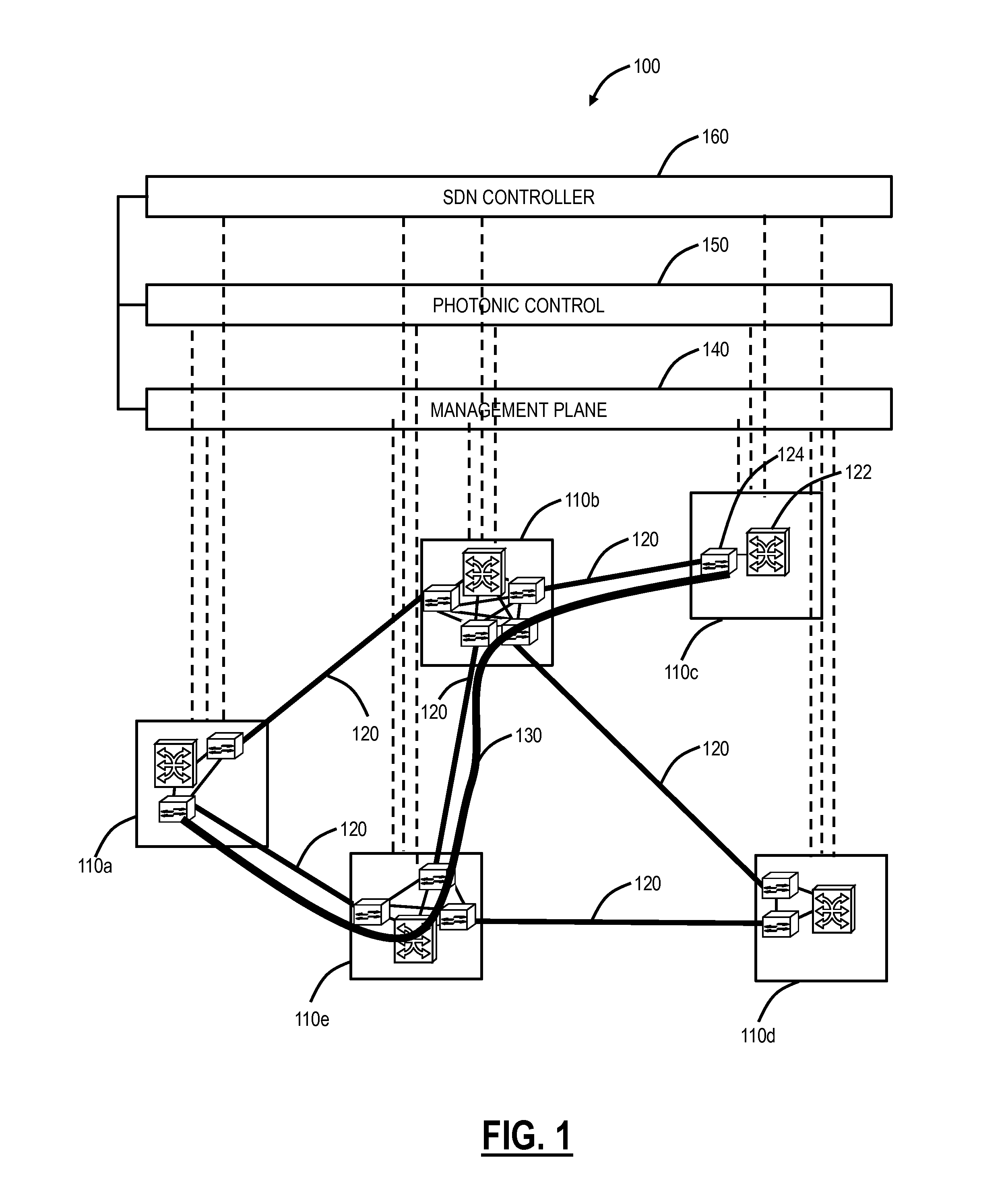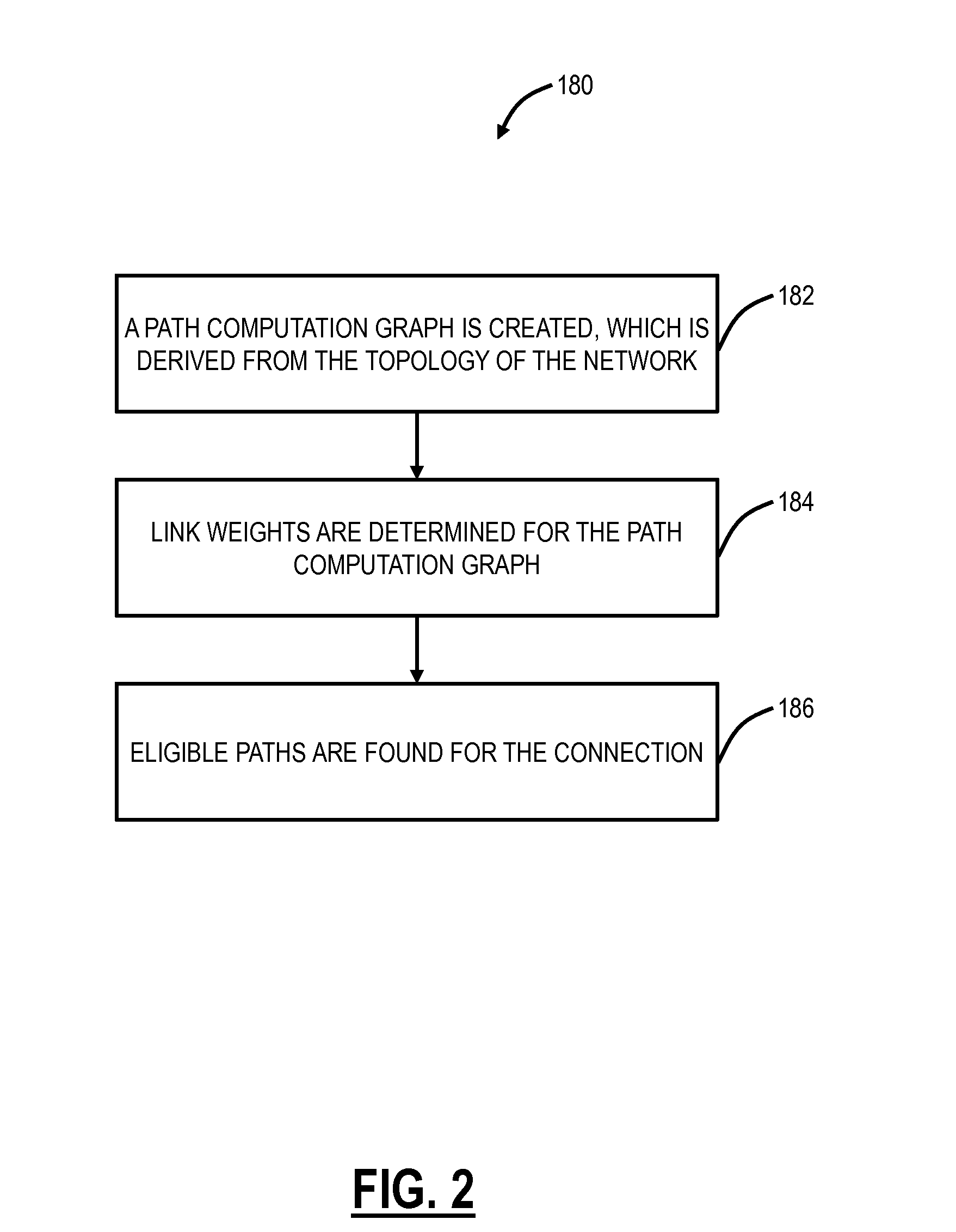Optical and packet path computation and selection systems and methods
a computation system and packet path technology, applied in the field of network systems and methods, can solve the problems of loss of throughput, low throughput and revenue, temporary overload, etc., and achieve the effect of reducing costs
- Summary
- Abstract
- Description
- Claims
- Application Information
AI Technical Summary
Benefits of technology
Problems solved by technology
Method used
Image
Examples
Embodiment Construction
[0027]In various exemplary embodiments, optical and packet path computation and selection systems and methods are described. The systems and methods address the aforementioned problems in on-demand networks, by taking advantage of the fact that path computation and scheduling of connections are performed at a central controller, with the network wide view of the network at the current time, as well as in future times. Path computation in the systems and methods take into consideration known and forecast network status at the time that the connection would be in the network. The path computation also finds a path for a new connection with an acceptable cost to the network to prevent throughput collapse. If the cost of a connection is too high, the connection may be rejected. The systems and methods consider further information in the path computation which may be forecast or exact. Also, the path computation finds eligible paths for a connection. In some cases, multiple paths may be ...
PUM
 Login to View More
Login to View More Abstract
Description
Claims
Application Information
 Login to View More
Login to View More - R&D
- Intellectual Property
- Life Sciences
- Materials
- Tech Scout
- Unparalleled Data Quality
- Higher Quality Content
- 60% Fewer Hallucinations
Browse by: Latest US Patents, China's latest patents, Technical Efficacy Thesaurus, Application Domain, Technology Topic, Popular Technical Reports.
© 2025 PatSnap. All rights reserved.Legal|Privacy policy|Modern Slavery Act Transparency Statement|Sitemap|About US| Contact US: help@patsnap.com



